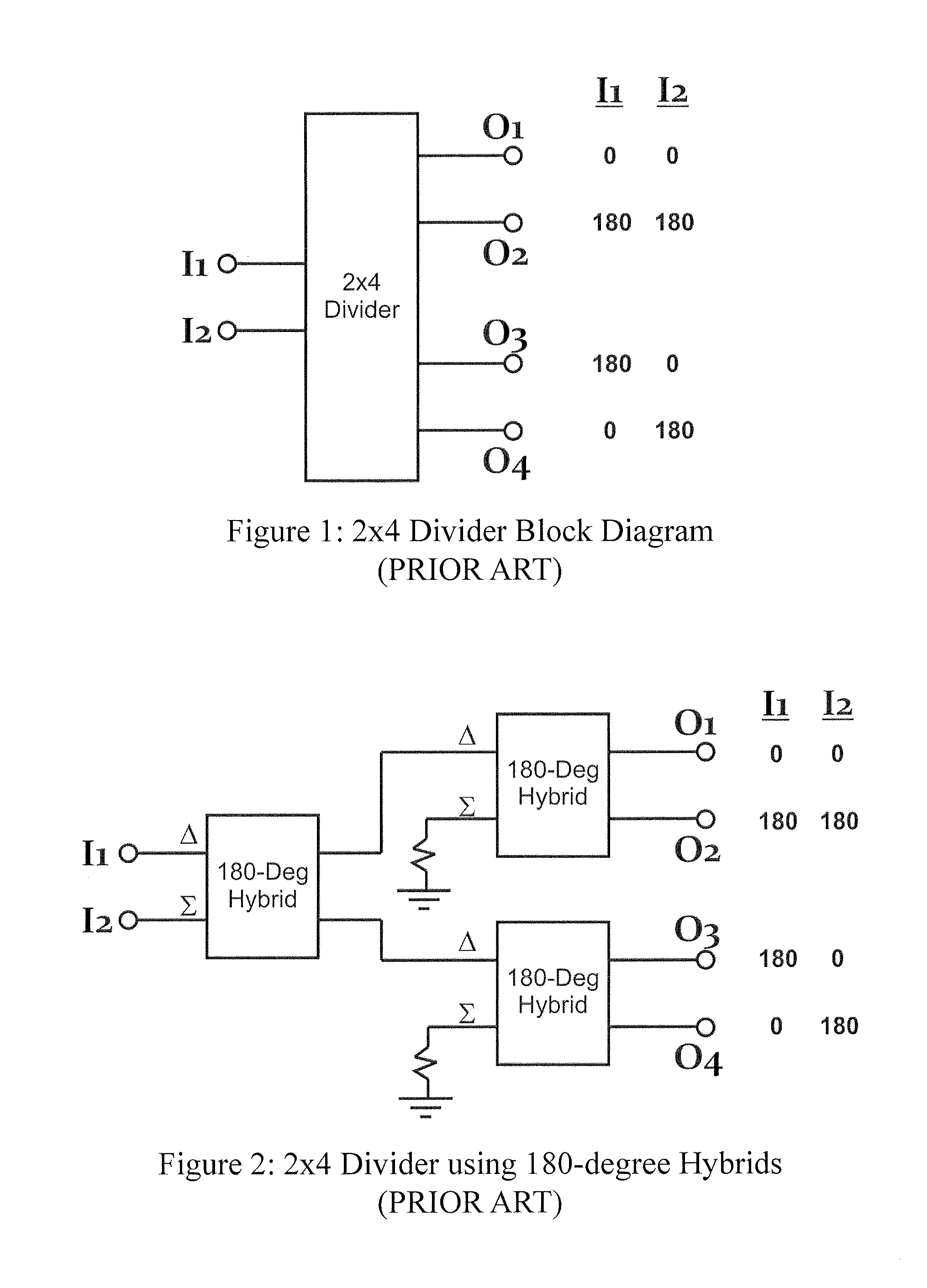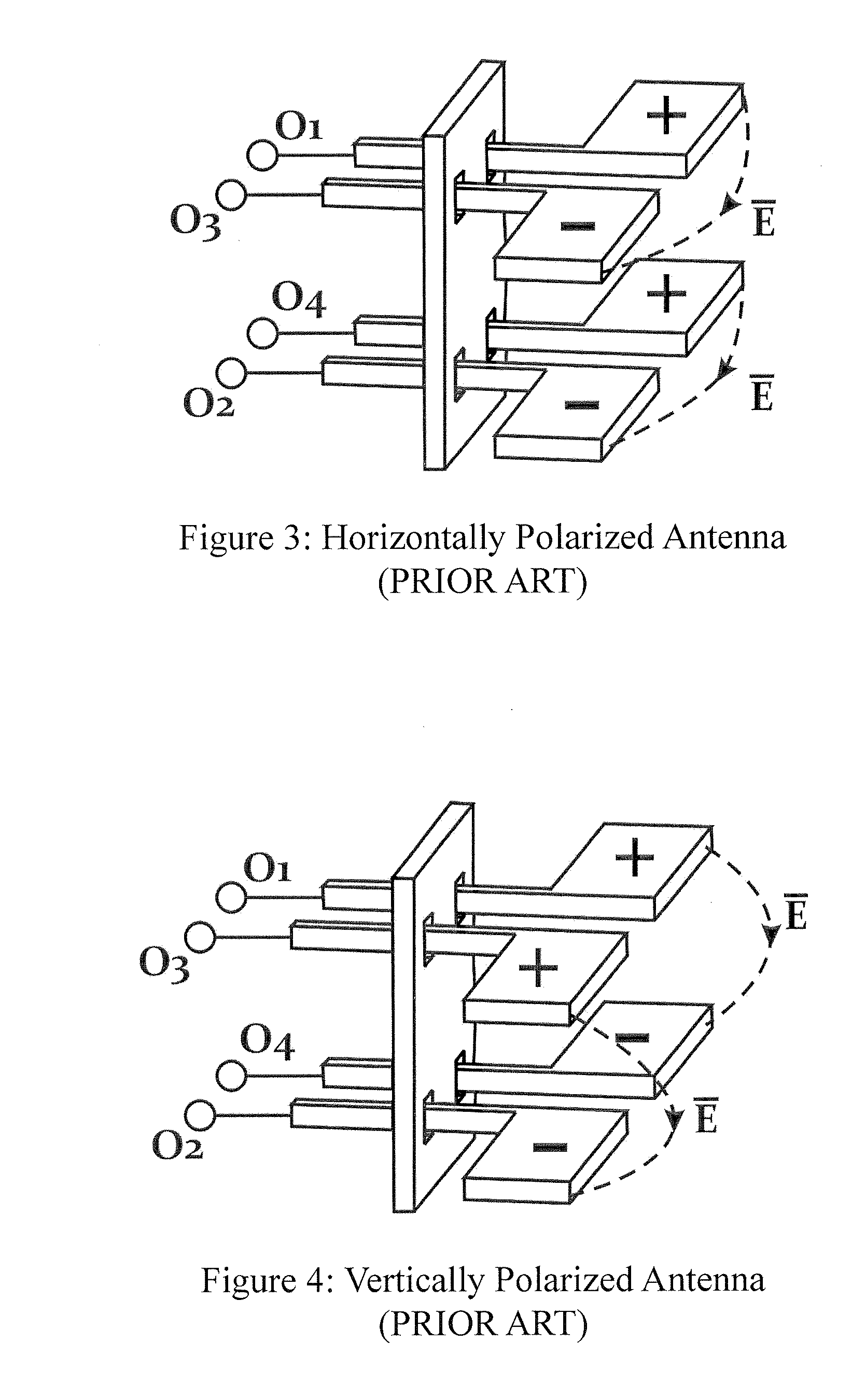Wide bandwidth integrated 2x4 RF divider
a power divider and wide bandwidth technology, applied in waveguides, polarised antenna unit combinations, electrical devices, etc., can solve the problems of large resistive load, high insertion loss of 24 dividers, and large resistive load of power dividers comprising 180-degree hybrids
- Summary
- Abstract
- Description
- Claims
- Application Information
AI Technical Summary
Problems solved by technology
Method used
Image
Examples
Embodiment Construction
[0023]A preferred embodiment of our 2×4 divider is illustrated in FIG. 5. At the 2×4 divider input, I1, the RF signal enters the 2×4 divider via a 50-ohm UT-085 semi-rigid coaxial transmission line 2 which is passed thru a slide fitting SB-801-61 ferrite bead 4 and split into two twin-lead transmission lines formed by the 20-gauge pair of wires 6 and 8 and the 20-gauge pair of wires 10 and 12. The insulation is removed from wire 6 and from wire 10 to fit within SB-801-61 ferrite beads 30 and 38 and also to form a 100-ohm transmission line within those ferrite beads. Since the pair of 100-ohm twin-lead transmission lines are connected in parallel, together they present a 50-ohm impedance match to the input coaxial transmission line. It is important to minimize the lengths of wire that are located outside the ferrite beads, since those lengths of wire contribute spurious reactance that can limit the upper frequency range of the 2×4 divider.
[0024]After passing thru ferrite beads 30 and...
PUM
 Login to View More
Login to View More Abstract
Description
Claims
Application Information
 Login to View More
Login to View More - R&D
- Intellectual Property
- Life Sciences
- Materials
- Tech Scout
- Unparalleled Data Quality
- Higher Quality Content
- 60% Fewer Hallucinations
Browse by: Latest US Patents, China's latest patents, Technical Efficacy Thesaurus, Application Domain, Technology Topic, Popular Technical Reports.
© 2025 PatSnap. All rights reserved.Legal|Privacy policy|Modern Slavery Act Transparency Statement|Sitemap|About US| Contact US: help@patsnap.com



